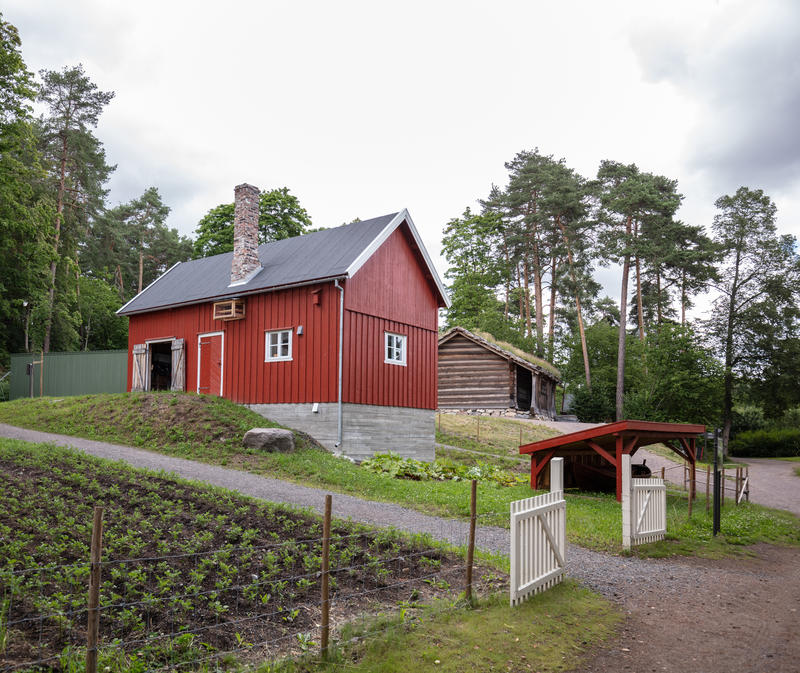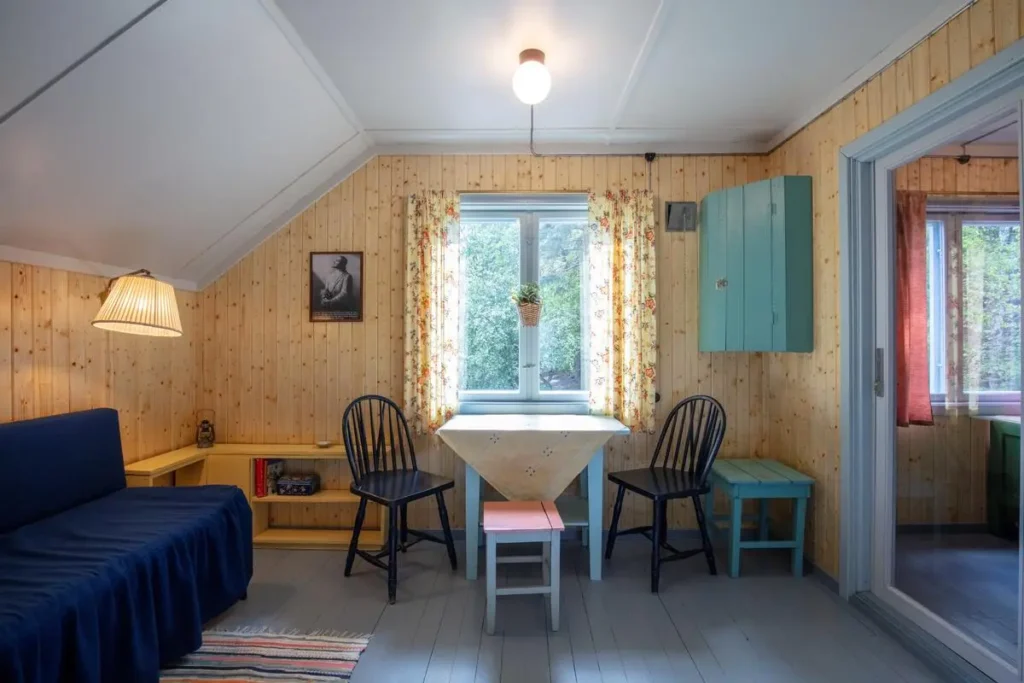The German occupation forces in Norway knew that World War II was lost, but they were not going to be given shelter by the Russians. Therefore, the Germans were eager to burn down as many of the wooden houses in Finnmark as they could. After the liberation in 1945, the region was rebuilt, and the buildings were referred to as the reconstruction houses from Finnmark.
At the Norwegian Folk Museum in Oslo, several reconstructed houses from Porsanger are on display. There, you can learn about the story of war, evacuation, refugee life, and reconstruction, but most of all about the people who have lived in Finnmark – about the Sami, Kvens, and Norwegians.

Traditionally, the houses in Finnmark were log cabins before they were destroyed during the war. The reconstruction houses were built using different methods. Some were constructed with log planks, while others were machine-made, approximately. 7 x 15cm horizontal planks with double tongue and groove. These were papered and paneled inside and out. Others were built in a strong (heavy) timber frame. Some houses were partially prefabricated and assembled from elements.
In Manndalen, the residents received support to build the reconstruction houses. Almost everyone there still lives in this type of house: a small, nearly square rectangle with two symmetrical windows, a steep roof with a chimney in the middle. A kind of prototype of a house, an iconic house, a house like children draw it.
The Directorate of Reconstruction oversaw the construction, established guidelines for housing quality, and held an architectural competition. Drawings were also made at the so-called Finnmark Office and at district offices.

Finnmark is located in the far north of Norway and constitutes one-sixth of mainland Norway, with an area of just over 48,000 square kilometers. Finnmark borders the Arctic Ocean to the north, Troms (Kvænangen) to the west, Finland to the south, and Russia to the east.
Porsanger is a trilingual municipality with Sami, Kven, and Norwegian as official languages. The population of Porsanger was mainly Sami (Sea Sami) until the 18th century, when Kvens from the Tornedalen in Sweden also settled in the area. Until World War II, fishing, agriculture, and reindeer herding were the most essential economic bases in Porsanger.
The Reconstruction Houses From Finnmark, reported by Tor Kjolberg
All images © Norsk folkemuseum


